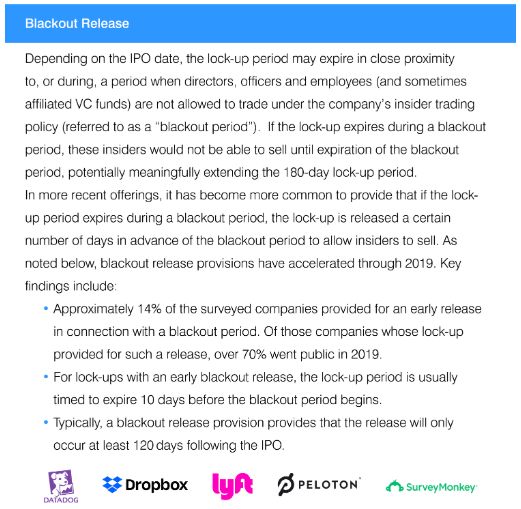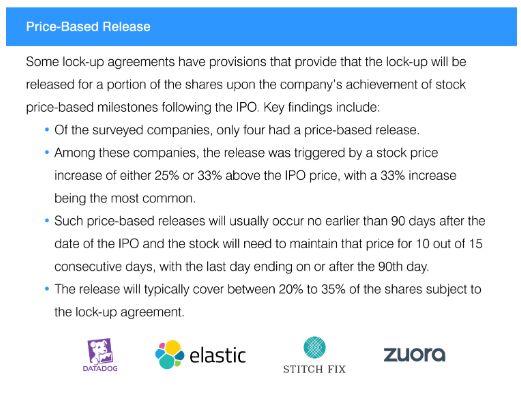A recent Fenwick survey found that the length of IPO lock-up agreements for technology companies continues to predominantly be 180 days but that lock-ups are now increasingly subject to early release provisions in connection with trading blackouts and, in certain cases, achievement of performance-based milestones tied to stock price.
Lock-Up Agreements
When a technology company goes public, its underwriters typically require all of the company's directors, officers, employees and pre-IPO investors (including VCs) to enter into lock-up agreements prohibiting them for a specified period of time from, among other things, selling any shares that were acquired prior to the IPO. Historically, these lock-up periods tended to last for a period of 180 days.
With the rise of alternative going-public structures—including direct listings and special purpose acquisition companies (SPACs), and the willingness on the part of investment banks to be more flexible in allowing companies to design lock-up structures that are tailored to fit their needs—we have seen a shift in the terms of lock-up agreements over the last few years.
Fenwick's corporate group recently conducted a survey of
more than 80 U.S.-based technology companies that have consummated
an IPO since January 1, 2017, to ascertain whether lock-up
agreement terms have meaningfully changed given recent market
developments. The survey focused on three key lock-up agreement
terms: length of lock-up, blackout release provisions and
price-based release provisions.
Here are a few notable takeaways:



Conclusion
These trends, when combined with the rise in direct listings and SPACs, suggest that companies now have more leeway to advocate for more favorable lock-up terms for their directors, officers, employees and pre-IPO investors.
The content of this article is intended to provide a general guide to the subject matter. Specialist advice should be sought about your specific circumstances.
